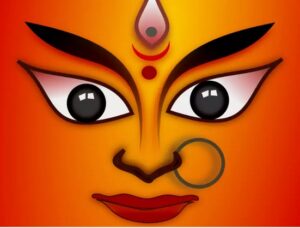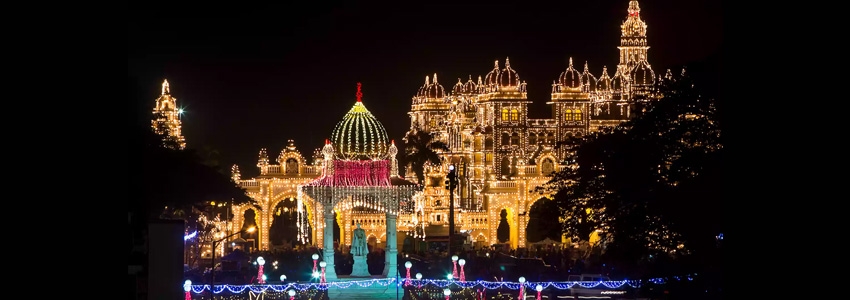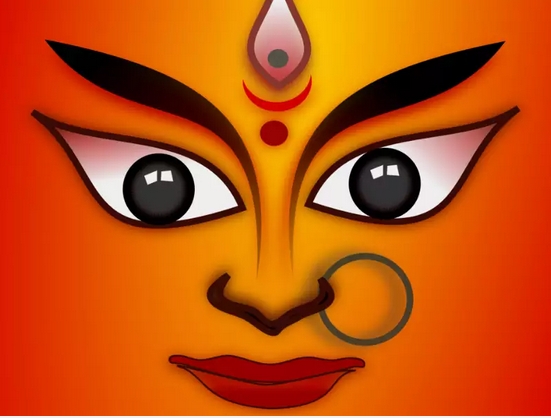
The Navarathri is the Festival to commemorate the Victory of Good over Evil. The Embodiment of Divine Power (of Para-sakthi), in its various manifestations, Sathwic (as Maha-saraswathi), Rajasic (as Maha-lakshmi), Thamasic (as Maha Kali) Was able to overcome the forces of vice, wickedness and egoism during the Nine Days’ struggle and finally, on Vijaya Dasami Day (the Tenth Day commemorating Victory), the Valedictory Worship is done.
Calendars (panchang) vary from state to state in India, the north can vary from the South, Bengal varies from Tamil Nadu and other states have different days for Dusshera. Many states observed this day on October 25 due Adhika Masam, and other reasons. We post today, as given above.
Dussehra – also known as Vijayadashmi – is a major Hindu festival celebrated on the tenth day of Shukla Paksha in the month of Ashwin according to the Hindu calendar (panchang). This festival is celebrated in a variety of ways in India and the neighbouring countries where Hinduism is followed. Dussehra festival comes along in the month of September or October. The day culminates a nine day fasting period of Navarathri in the Hindu culture and coincides with the immersion of the idol Goddess Durga.
Ramayana:
According to Ramayana, it is believed that the celebration of Dussehra started in the 17th century, when the king of Mysore ordered the celebration of the day on a grand scale; the day is being celebrated with great fervour and energy. The festival commemorates the victory of good over evil, as it is the day when Lord Rama killed the ten-headed demon king Ravana. The demon king, who had abducted Sita and had held her captive in Lanka, was hoping to win her love. But Sita, being the devoted wife braced all the ordeals resiliently and waited to be reunited with Rama. The war between the demon king and Lord Rama was fought to rescue Sita from the clutches of Ravana. The war lasted for ten days, which culminated on Dashmi (the tenth lunar day of the Hindu calendar month) when Rama bravely destroyed the ten-headed Ravan and took Sita home along with him. The glorious victory of good over evil, and the home coming of Rama, Sita, Lakshmana and Hanuman were celebrated with great happiness, which continues to be followed by Hindus to date in the form of Dussehra.

Dussehra festival is celebrated on a large scale, but the most famously it celebrated in Mysore. People visit the puja pandals wearing new clothes, traditional food is prepared at home and celebrate the significant day with families and friends. And to add to this festival, Dussehra is also considered an auspicious day to begin new ventures like business or any kind of work. Dussehra is truly a beautiful, enriching occasion of celebration, happiness and most importantly the worship of good.
Stuti:
Ya Devi Sarva Bhuteshu Chetanaetya bhidhiyate
Namastasyai Namastasyai Namastasyai Namo Namaha
Salutations to Devi who abides as the eternal consciousness in all beings. Salutations.

No country in the world demonstrates such enduring reverence for the Great Mother Goddess, as does India. The Goddess is celebrated in every form, aspect and quality, through music, art, ritual, mantra and meditation. She is honoured in women, the Earth, nature and the transcendent beyond all expression. Her worship is full of splendour, delight, mystery and wonder.
The Goddess is Shakti, meaning power, the resort of all transformative energy and cataclysmic force that mere human logic cannot comprehend. She possesses martial and regal forms that all must bow down before in awe. During the Navaratri – India’s famous festival of the Goddess celebrated not only in the autumn but also in the spring- she is worshipped as Durga, the supreme Shakti, holding all majesty, wisdom and grace.
Durga is the Mother of the universe from who comes forth the creation, sustenance and dissolution of all beings and all worlds. She is Chit-Shakti, the power of consciousness, out of which the cosmos coalesces as matter, life and mind.
India as a sublime culture and profound dharmic civilization is the gift of Ma Durga. Durga is the Goddess who personifies India as a whole and its incredible vitality, from her presence in village shrines to her representation of the highest yogic spirituality. Mother India is Durga with her imperious lion. She was the image behind India’s independence movement, which worked through her inspiration, such as Sri Aurobindo so eloquently lauded. She remains the aspiration for future India and its global influence to draw the world back to its spiritual roots.

108 Names of the Divine Mother (English)
Om… I bow to SHE who is the Mother of the Universe.
Each of the Divine Names (in English) ends with ~ swaha.
When you use the Sanskrit word swaha you are invoking the God / Goddess, you are arousing the God / Goddess to come and witness your action, to come and receive your prayer.
We append these 108 Names of the Divine Mother and pray that you will be understanding the significance of the prayers, along with the efficacy of same.
Download the 108 Names of the Divine Mother
![]()

